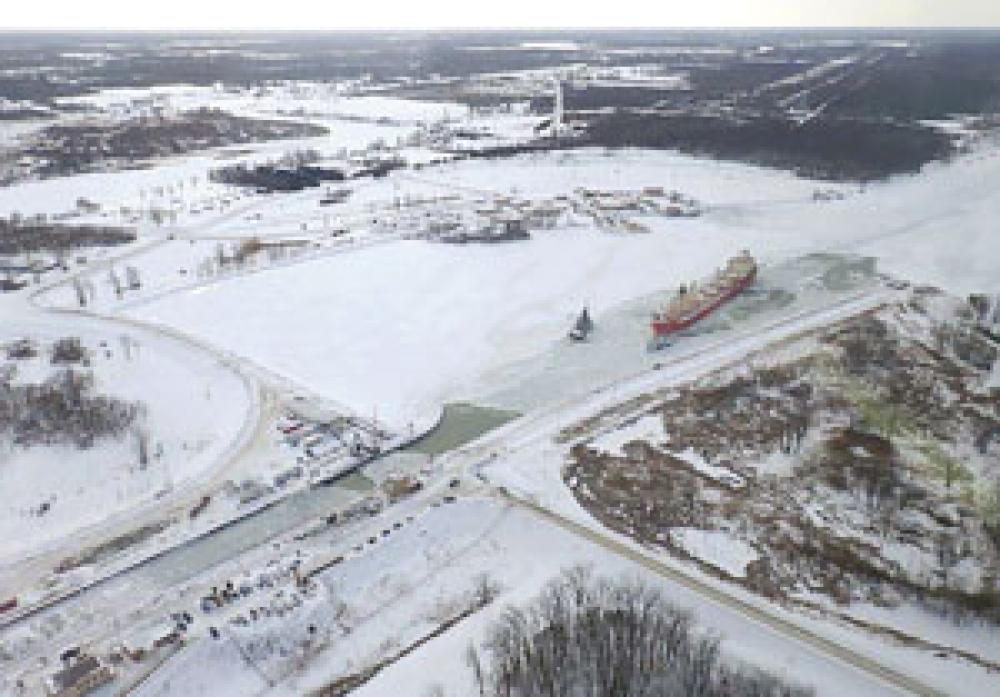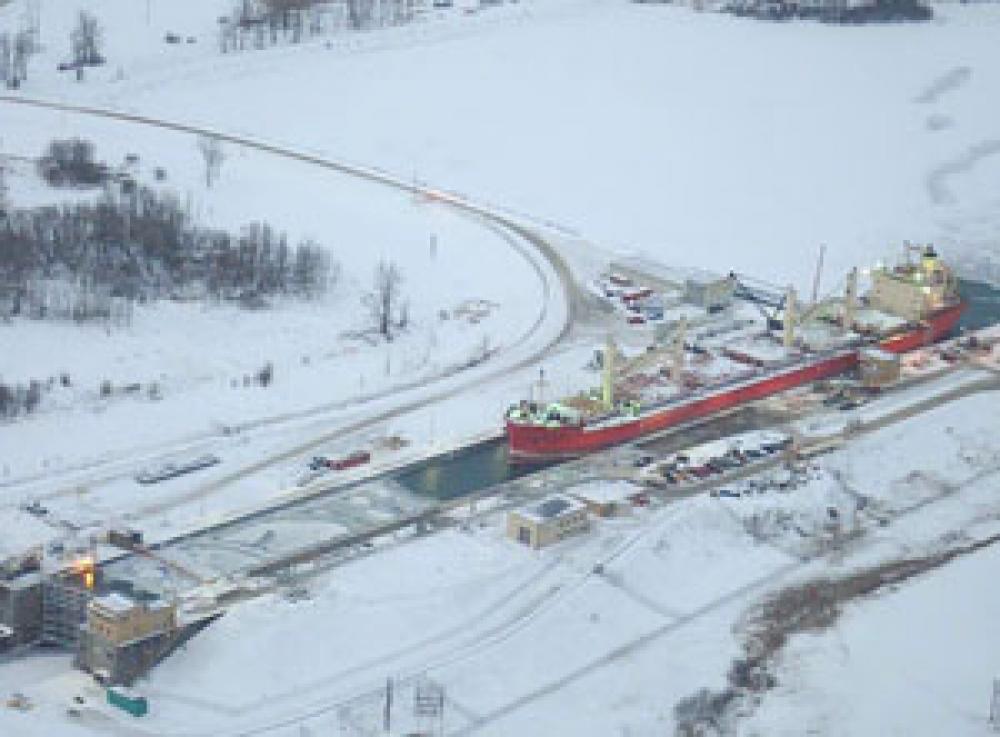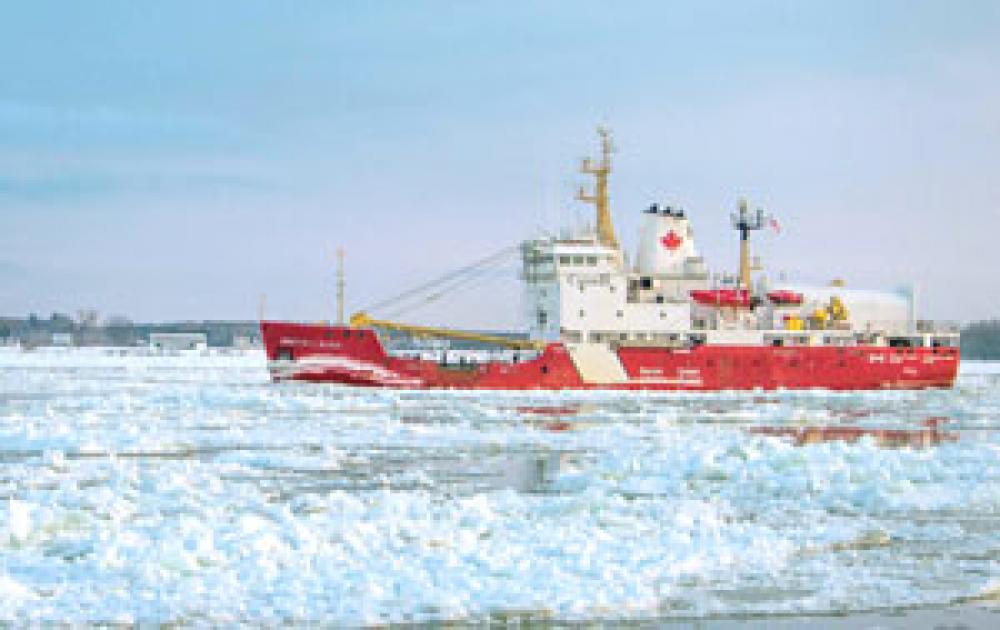
St. Lawrence Seaway: The Canadian Coast Guard's Winter Mandate
Icebreaking and ice management are at the heart of the Canadian Coast Guard’s winter mandate. These critical services make it possible for vessels to navigate the St. Lawrence River year-round, a rather rare situation in northern countries. Operations include route assistance (escorting and freeing vessels, maintaining shipping channels, harbours and dock breakout), ice routing and information services, flood control and assistance with opening and closing the St. Lawrence Seaway.
Great Lakes-St. Lawrence Seaway network
During the cold season, the Canadian Coast Guard devotes most of its efforts to maintaining the Great Lakes-St. Lawrence Seaway network, a 3,700 km waterway that extends from the Great Lakes to the Atlantic Ocean. Running along the Canada/U.S. border, this waterway is managed in partnership by the St. Lawrence Seaway Management Corporation, a Canadian corporation, and the Saint Lawrence Seaway Development Corporation, its American counterpart. Because of its sophisticated lock system (13 Canadian and 2 American), the “St. Lawrence Seaway” portion, located between Montréal and Lake Erie, must be closed annually between December and March. This gate and valve system makes it possible for vessels to navigate between the Great Lakes and the St. Lawrence River despite water surface tilt of 183 metres. Significant ice accumulation impedes the safe functioning of this narrow marine lift system, which is why it is subject to seasonal closure.
The whims of Mother Nature
In December 2017, Canada was hit with an unprecedented cold wave, causing early ice formation on the Great Lakes and St. Lawrence. This whim of Mother Nature presented a challenge for the closure of the Seaway, which was initially scheduled for December 31 and then postponed to January 11, 2018. Despite the Canadian Coast Guard’s icebreaking and maintenance efforts, the rapid accumulation of snow and ice in this shallow freshwater channel slowed traffic and complicated manoeuvres. “Seawaymax” vessels, the largest vessels to use the channel, are already a tight fit in open water. Moreover, some vessels do not have a structure suited to water engulfed in ice.
The year 2018 began with the forced tie-up of the Federal Biscay, trapped in the ice in Snell Lock on the American side. Traffic was halted for about 10 vessels that were blocked around the lock for the five days it took to free this Seawaymax. Operations were carried out by the icebreaker CCGS Martha L. Black, assisted by the tug Ocean Tundra, belonging to the Ocean Group. This was the first contract awarded under the Supply Arrangement (SA). Entered into in December 2017 by Public Services and Procurement Canada and the Canadian Coast Guard, this arrangement authorizes certain private partners to support services when required. After several days of icebreaking and escorting vessels, the cold wave ended, giving way to a warm trend. Upon closing on January 11, 2018, the St. Lawrence Seaway broke a record for its longest operating season, with 298 active days in 2017.
Ice monitoring and spring operations
The Canadian Coast Guard’s winter mandate continued on the accessible portion of the river, between Montréal and the Gulf of St. Lawrence. During the rest of the winter, the icebreaker fleet repositioned to strategic areas on the waterway to monitor and manage ice motion to prevent ice jams and flooding and to be ready to assist vessels. When the Canadian Coast Guard’s Ice Superintendent considered the weather and ice conditions suitable, spring icebreaking operations commenced. This year, the green light was given on February 19 instead of in early March as is typical, in contrast with the delays that occurred in December 2017. Icebreakers and hovercraft worked together to destroy the river’s fast ice that had been cleverly left intact during the winter to create a safe marine corridor. On March 24, the fleet moved on to the locks to prepare for the opening of the St. Lawrence Seaway, which finally opened for ship navigation on March 29.
Stacy Dufour
Canadian Coast Guard

ECCC M. Laperriere
In December 2017, Canada was hit with an unprecedented cold wave, causing early glaciation of the Great Lakes and the St. Lawrence. (Photo: Environment and Climate Change Canada, M. Laperrière)

ECCC G. Paradis
Significant ice accumulation prevents safe operation of the St. Lawrence Seaway lock system, hence the need to shut it down during winter. (Photo: Environment and Climate Change Canada, G. Paradis)

DFO O. Lachance
The icebreaker CCGS Martha L. Black.





